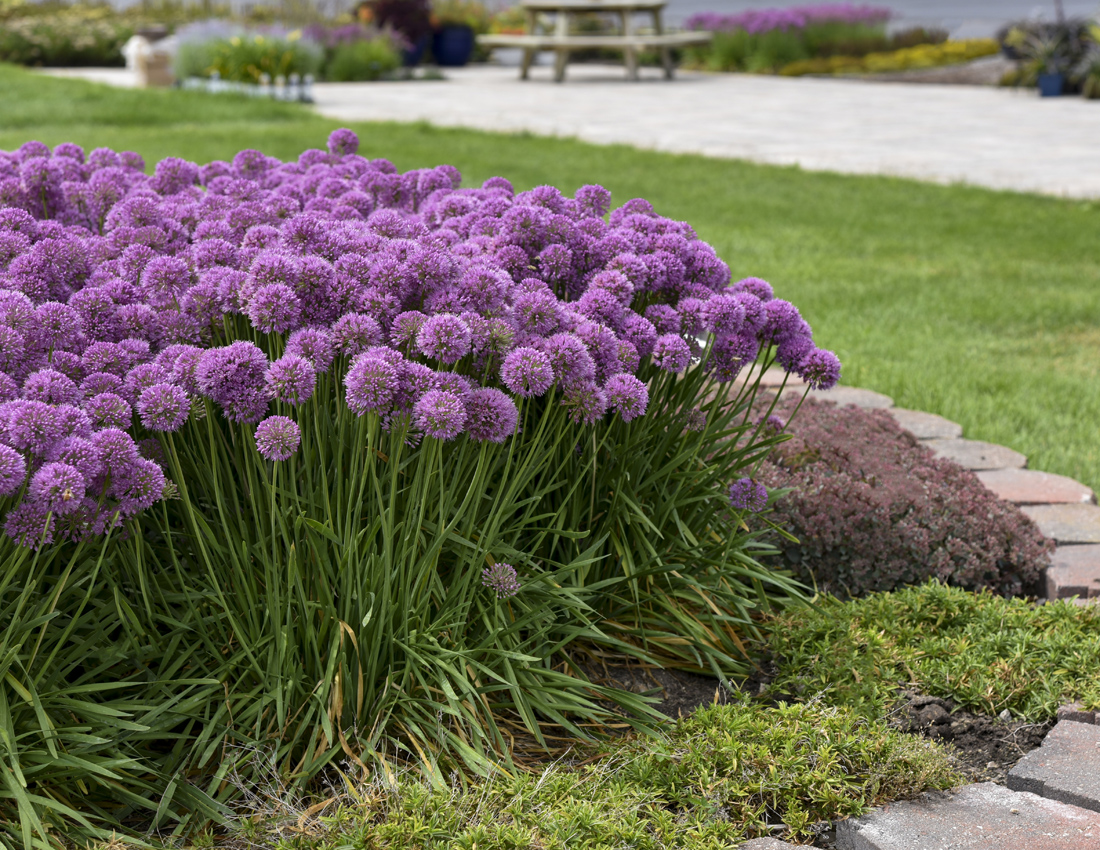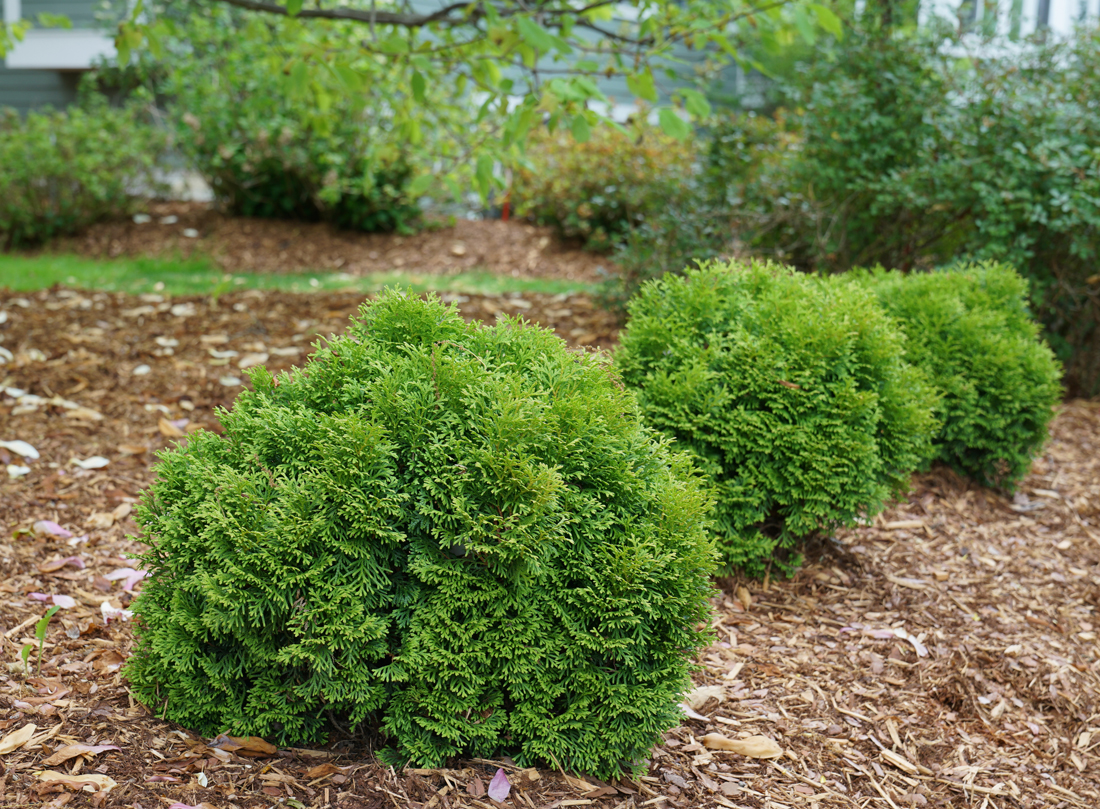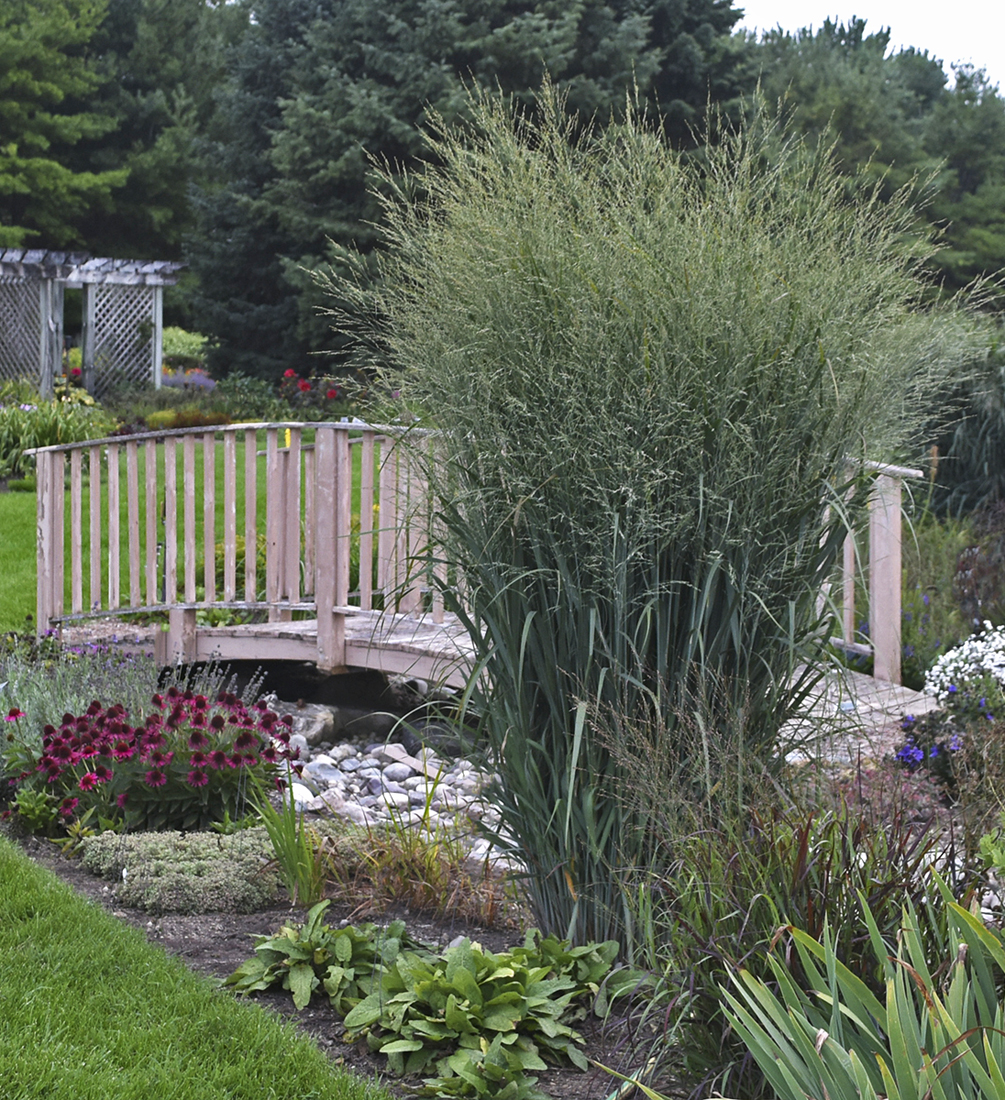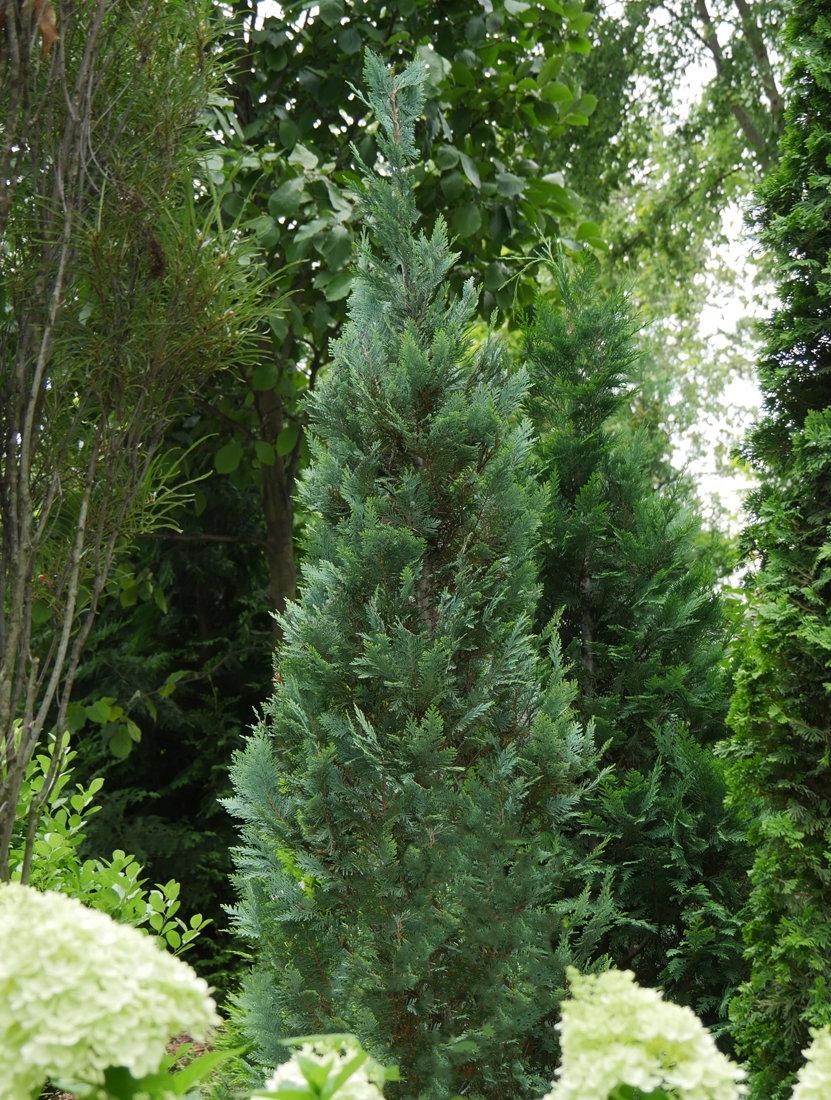10 Easy Foundation Plants for the Front of Your House
Wondering which plants are good for foundation plantings? We’ve picked out ten easy to grow perennials and shrubs that thrive in average garden conditions and will look great planted in front of your house. Let’s take a closer look.
Some people have plenty of time to tinker around in their garden until their heart’s content, but if that doesn’t describe you, you are going to find this list super handy. We’ve selected ten easy to grow perennials and shrubs that you can plant next to your house and count on to always be in tip top shape. All of them thrive in average garden soil provided that it is well-drained and won’t mind if you miss a day or two of watering. Let’s take a closer look at each of these low maintenance plants for your foundation garden bed.
*Tip: These ten plants are organized from shortest to tallest to help you organize your foundation planting from front to back.

1. Stonecrop
Rock 'N Round® 'Pure Joy' Sedum
It’s hard to imagine an easier perennial to grow than this little cutie. It forms a perfect dome-shaped mound that hugs the ground, reaching just 10-12” in tall in full bloom. That makes it a perfect choice for growing along the edge of your foundation bed in front of taller roses or evergreens. It will look its best if you grow it in full sun and drier soil with no extra fertilizer needed. Too much love makes sedum’s stems weaker, so just plant it and forget it. Bonus: Light pink flowers which pollinators adore completely cover the succulent green foliage in late summer. Perennial in zones 3-9.
Learn more about growing sedum plants.
 'Cat's Pajamas' |  ‘Cat’s Meow’ ‘Cat’s Meow’ |
2. Catmint
‘Cat’s Pajamas’ and ‘Cat’s Meow’ Nepeta
If you take a drive around town in late spring, you may notice this perennial planted in large drifts. It looks like a blue cloud hugging the ground and it’s often grown in such large numbers because it is so carefree. Like sedum, catmint thrives in full sun and no extra fertilizer is needed. Even if the soil tends to be a bit dry up near your home's foundation, this plant will thrive in the poor soil and reflected heat from your brick or siding. Cut it back once after its first round of blooms and it will reward you with even more flowers throughout the summer. Both varieties named here are excellent choices, with size being the primary difference. ‘Cat’s Pajamas’ grows 12-14” tall; ‘Cat’s Meow’ grows 17-20” tall. Both are perennial in zones 3-8.

3. Hosta
Shadowland® ‘Wheee!’ Hosta
If your foundation is shaded for part or much of the day, hostas are an easy solution. They come in many sizes, from the giant ‘Empress Wu’ hosta to miniature varieties like ‘Mini Skirt’ and every other size in between. ‘Wheee!’ is a distinctive, medium-sized, variegated hosta that grows 11-18” tall and matures to 28-30” across. If you are growing a short row of annual flowers like Double Up™ begonias at the very front of your foundation bed, ‘Wheee!’ can be planted right behind them. Since hostas return reliably every year, you can count on them to fill the beds up near your home with no fuss, no muss color and texture. Perennial in zones 3-9.

4. Ornamental Onion
‘Serendipity’ Allium
Ever since Allium ‘Millenium’ was showcased by the Perennial Plant Association as the Perennial Plant of the Year in 2018, this class of ornamental onions has skyrocketed in popularity. ‘Serendipity’ was discovered as a “sport” of ‘Millenium’. It has all the same traits except the non-spreading, mounded foliage is more distinctly blue-green instead of the emerald green of ‘Millenium’. In mid to late summer, rosy purple, 2” globe-shaped flowers stand like lollipops on 15-20” tall stems above the low growing foliage. You’re likely to find pollinating bees and butterflies enjoying it on sunny days. This perennial thrives in full sun to part sun in zones 4-8 and requires no special treatment to thrive.

5. Globe Arborvitae
Tater Tot® Thuja occidentalis
If low growing evergreens are what you need for under your front windowsills or a hedge bordering your entryway, consider this dwarf globe arborvitae. It’s easy to grow in full sun to part sun, handles sandy or well-drained clay soil, and needs little to no pruning to keep its tidy shape. If boxwood blight is an issue in your area, Tater Tot makes an excellent evergreen substitute. (Find even more alternatives to boxwood here.) This ball-shaped evergreen shrub grows 1-2’ tall and wide, so it fits well in the middle layer of a foundation bed with shorter flowers planted in front and taller flowering shrubs like Limelight Prime® panicle hydrangea planted in back. Hardy in zones 3-7.

6. Juniper
Tortuga™ Juniper communis
This native cultivar of our common juniper is one of the toughest and most low maintenance evergreens you’ll find. It spreads easily into a low, broad mound of emerald green foliage to fill the middle sections of your foundation bed. This juniper looks fantastic planted en masse in places where no maintenance is needed, with each plant growing 2’ tall and 3-4’ across. It easily withstands extreme cold, all-day sun to part sun, drought, air pollution and black walnut trees, while being deer and rabbit resistant. How’s that for checking all the boxes? Hardy in zones 2-7.

7. Panicle Hydrangea
Little Lime® Hydrangea paniculata
One of the easiest types of hydrangeas you can grow along your home’s foundation is a panicle hydrangea. Because their size ranges greatly, you’ll want to be sure to read the label carefully when choosing which is the best fit. Some, like the classic ‘Limelight’ panicle hydrangea, can grow upwards of 8’ tall and are better positioned at the corner of your house. Little Lime looks much like ‘Limelight’ but stays shorter at 3-5’ tall. That makes it a better candidate for planting near windows where it won’t block the view.
Panicle hydrangeas do not require special soil to grow except that it needs to be well-drained. They do not like wet soil and can be watered at the same frequency as all the other shrubs in your landscape. Choose a spot in full sun to part sun in the North and protect from afternoon sun in the South. Since panicle hydrangeas bloom on new wood, you can count on a reliable flowering performance every year. Hardy in zones 3-8.
See more types of hydrangea bushes.

8. Switch Grass
Prairie Winds® 'Totem Pole' Panicum virgatum
Ornamental grasses might not be the first plant you think of for foundation plantings, but they are actually a very practical choice. Switch grass is a native plant that is extremely durable, tolerating drought as well as short periods of flooding, standing up to wind and storms, and thriving in full sun and heat. It is also salt tolerant, so it is safe to plant near driveways and paths that are salted in winter.
‘Totem Pole’ is a 6’ tall, narrow columnar variety of switch grass that can be used to soften the corner of your house, hide utilities, or create a living screen. Its gray-green to steel blue foliage complements any neutral color of brick or siding. Other than cutting it down to the ground each spring, no other maintenance should be needed to keep it standing tall all season. Perennial in zones 4-9.
 Soft Serve® |  Pinpoint® Blue |
9. False Cypress
Soft Serve® and Pinpoint® series Chamaecyparis
If shade and deer are a challenge in your landscape, consider growing false cypress. These evergreen shrubs handle part shade well (though they also grow in full sun) and their fragrant foliage tends to be less appealing to deer. For a shorter 6-10’, broadly pyramidal shape, try Soft Serve or Soft Serve Gold. Their shorter size fits nicely in proportion with a 1-story house and won’t grow tall enough to hit the gutters running along your roofline. For a taller, narrower space, perhaps in a grouping at the corner of your house or as a privacy hedge, choose a Pinpoint false cypress. They grow 15-20’ tall with a 5-6’ diameter at the base. Soft Serve is hardy in zones 4-8; Pinpoint grows in zones 5-7.
10. Rose of Sharon
Chiffon® Series of Hibiscus syriacus
If the idea of a low maintenance plant that blooms for months sounds appealing, take a look at the Chiffon series of rose of Sharon shrubs. They grow quickly, don’t require pruning, and produce few to no seeds so they won’t pop up elsewhere around the garden. Chiffon varieties bear anemone-shaped blossoms in seven different shades of pink, purple, blue or white.
Rose of Sharon shrubs come in several sizes, though most are quite large. Chiffon varieties grow 8-12’ tall and tend to be taller than they are wide. This makes them a good candidate for screening, hedging, or planting along a tall, blank wall where you could use a pop of color. The sunny side of your garage is the perfect place for a rose of Sharon since it can handle the reflected heat, light, and soil that tends to be a bit drier. Hardy in zones 5-9.
Want to explore more low maintenance plants for foundation plantings?
- Video: Top Shrubs for Foundation Plantings
- Video: Top 10 Hedge Shrubs
- Video: Planting Arborvitaes for Privacy or a Hedge
- 6 No-Prune Shrubs for Landscapes
- 15 Easy Plants for Your Landscape





